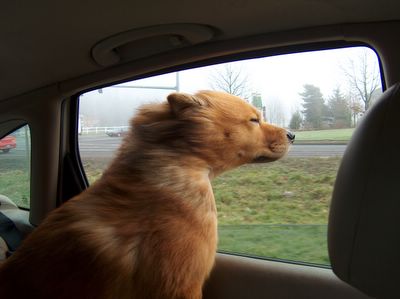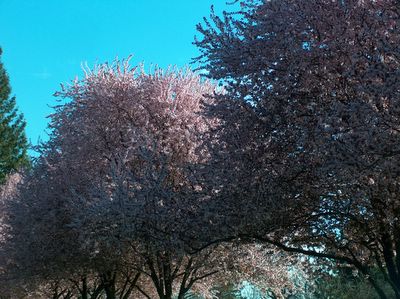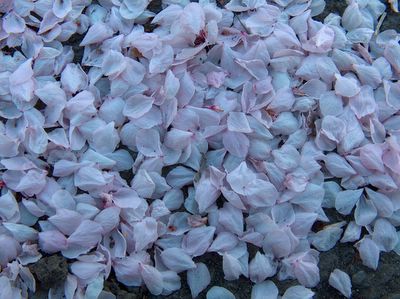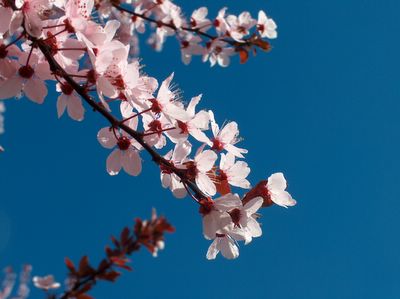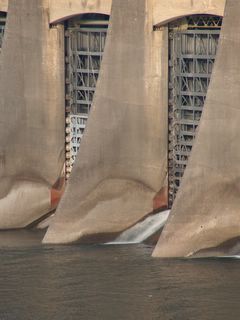nastaliq.html
quarn in nastaliq
November 9, 2005
September 8, 2005
Packaging Printing
Converting:
Changing one thing into another - turning a flat sheet of paper into a glued, folded, more complext structure.
Think about bleeds - if a letter head has a 2 bleed edge they're going to have to use larger sheets of paper
Any kind of show through special thing- embossing, letterpress
(seattle envelope company - has pdfs of dies on their site)
Specialty Process -
Not for large runs - maybe 10s of thousands.
Lithographic Methods:
1) Thermography - wet ink gets a thermo powder and then dried - waxy w/ raised texture - if folded it will crack
Can get thermo powder at craft stores - best using inkjet printers or wet soluable inks and brushing water on it - put powder on and then heat w/ iron.
2) Varnishing- after printing method
gives a different sheen to a section of paper - only works well on coated papers
Graphic Arts Monthly - has varnish and stacato printing
Comping for varnish - usually a spot color is placed over the area to be varnished
Relief:
1) Letterpress - traditional w/ lead type
sometimes wood type
most popular - magnizim (lastlonger & get more detail) or polimar
2) Foil Stamping -
uses heat to transfer the foil to the paper
no easy way to comp foil
can not do fine detail, thin script or halftone
to compt metal ink - buy Pearl-x mix with matt medium and paint over for metal ink
3) Embossing
a) damentinal - most expensive - needs a positive and a negative plates
b) embossing or debossing - copper plates - can easily print and then embossing
comping an emboss - file folder, cut design (through both layers) with really sharp blade, place paper over the cut, using a burnisher rub around the edges. Use a wide tipped burnirsher
Engraving:
uses an etched plate - great for high detail work
doesn't ware down fast
Scoring, perfing, and die cutting:
Scoring - can happen through a di cutting machine or done with a scoring wheel - always done on the out side of the fold
Perfing - micro and standard - on die machine or perfing wheel
Die Cutting - template that its going to take to get a specific shape - easy to speck: solid black line on a dif. layer
Lazer Cutting - can get great details cut out
Changing one thing into another - turning a flat sheet of paper into a glued, folded, more complext structure.
Think about bleeds - if a letter head has a 2 bleed edge they're going to have to use larger sheets of paper
Any kind of show through special thing- embossing, letterpress
(seattle envelope company - has pdfs of dies on their site)
Specialty Process -
Not for large runs - maybe 10s of thousands.
Lithographic Methods:
1) Thermography - wet ink gets a thermo powder and then dried - waxy w/ raised texture - if folded it will crack
Can get thermo powder at craft stores - best using inkjet printers or wet soluable inks and brushing water on it - put powder on and then heat w/ iron.
2) Varnishing- after printing method
gives a different sheen to a section of paper - only works well on coated papers
Graphic Arts Monthly - has varnish and stacato printing
Comping for varnish - usually a spot color is placed over the area to be varnished
Relief:
1) Letterpress - traditional w/ lead type
sometimes wood type
most popular - magnizim (lastlonger & get more detail) or polimar
2) Foil Stamping -
uses heat to transfer the foil to the paper
no easy way to comp foil
can not do fine detail, thin script or halftone
to compt metal ink - buy Pearl-x mix with matt medium and paint over for metal ink
3) Embossing
a) damentinal - most expensive - needs a positive and a negative plates
b) embossing or debossing - copper plates - can easily print and then embossing
comping an emboss - file folder, cut design (through both layers) with really sharp blade, place paper over the cut, using a burnisher rub around the edges. Use a wide tipped burnirsher
Engraving:
uses an etched plate - great for high detail work
doesn't ware down fast
Scoring, perfing, and die cutting:
Scoring - can happen through a di cutting machine or done with a scoring wheel - always done on the out side of the fold
Perfing - micro and standard - on die machine or perfing wheel
Die Cutting - template that its going to take to get a specific shape - easy to speck: solid black line on a dif. layer
Lazer Cutting - can get great details cut out
binding 9-8-05
Saddle-Stitch Binding
- Signatures or spreads
- Opened and draped over saddle
- Stapled or sewn along the spine
- Lays Flat
- Signature Creep with long publications
- Really inexpensive
Perfect (Glue) Binding
- loose sheets or signatures
- usually stacked, milled and glued
- cover is applied to the glued spine
- Can sometimes print on the spine
- can lose content in the gutter
- Variety of binding methods...
- Expensive
- grinding process allows more glue to go between the signatures
- from the spine about 1/8th inch in there is a score becuase of the glue seeping over.
Punch Binding
Comb-binding Wire Spiral-Binding, Wire O binding
- Allows for full bleeds
- Reguires four-edge trim from signatures
- Easy for loose-sheets
-Punched holes block gutter content
Side-Stitching Binding
-Signatures or Loose Sheets
-Stapled or sewn along the side of the spine
-Doesn't lay flat
-Content easily lost in the gutter
Screw & Post Binding
-Loose sheets & Signatures
- Good For changing content
- Expandable
-Doesn't lay flat
- Content easily lost in the gutter
Tape Binding
-Loose Sheets & Signature
- Book lays flat
- Not very durable
- Inexpensive
- Weakest method of binding
Glue-
Cold cure glue method - PVA
Hot cured glues - liquid when hot and hard when cold
Channel Binding
-Loose sheets & signature
-Doesn't lay flat
-Content easily lost in gutter
- a metal channel is usually squeezed over the block (clamping them together)
Case Binding
-Signatures
- Puts "hard-cover" on book-block
- block can be sewn or glued
- most durable
- most expensive
-need to start with a pre-bound book block
Smith- Sawn Binding (in text book)
-New method
- mix of case and perfect
- will lay relatively flat
- flexable covers that are stiff
-
- Signatures or spreads
- Opened and draped over saddle
- Stapled or sewn along the spine
- Lays Flat
- Signature Creep with long publications
- Really inexpensive
Perfect (Glue) Binding
- loose sheets or signatures
- usually stacked, milled and glued
- cover is applied to the glued spine
- Can sometimes print on the spine
- can lose content in the gutter
- Variety of binding methods...
- Expensive
- grinding process allows more glue to go between the signatures
- from the spine about 1/8th inch in there is a score becuase of the glue seeping over.
Punch Binding
Comb-binding Wire Spiral-Binding, Wire O binding
- Allows for full bleeds
- Reguires four-edge trim from signatures
- Easy for loose-sheets
-Punched holes block gutter content
Side-Stitching Binding
-Signatures or Loose Sheets
-Stapled or sewn along the side of the spine
-Doesn't lay flat
-Content easily lost in the gutter
Screw & Post Binding
-Loose sheets & Signatures
- Good For changing content
- Expandable
-Doesn't lay flat
- Content easily lost in the gutter
Tape Binding
-Loose Sheets & Signature
- Book lays flat
- Not very durable
- Inexpensive
- Weakest method of binding
Glue-
Cold cure glue method - PVA
Hot cured glues - liquid when hot and hard when cold
Channel Binding
-Loose sheets & signature
-Doesn't lay flat
-Content easily lost in gutter
- a metal channel is usually squeezed over the block (clamping them together)
Case Binding
-Signatures
- Puts "hard-cover" on book-block
- block can be sewn or glued
- most durable
- most expensive
-need to start with a pre-bound book block
Smith- Sawn Binding (in text book)
-New method
- mix of case and perfect
- will lay relatively flat
- flexable covers that are stiff
-
August 25, 2005
Print Production 8.25 Due Week 9
Text book - can have some images but text heavy.
Multipage layout for a first act or 16 pages of a shakespear play.
(absoluteshakespear.com - on class website)
This will be a script
Title pages
Character list
Have room for notes in margines
No larger then 5x7
at least 16 pages
have to use master pages & style sheets
Turn in:
Printer Files
Printed page that has a diagram of the parent sheet of the paper i might run it on - impositioned page. If it's 17x22 how would i lay it out.
HowTo:
go to notes
need room for trim
best w/ smallest amount of waist
InDesign:
Master Pages: Template - puts the grid on all the pages
- Shift will select both left and right master pages
- Can make more then one master page style
- if a page is A and want it B you can drag and drop a B master page on top
- any graphic on a master page will appear on all the other pages
-good for header and footers - folios
Automatic Page Number
comand+option+N inside a text box on a master page
Text Fill:
If you have a huge area of text you can click on the Red Plus sign and then click on the margin of the next page and fill the margin area with text.
Style Sheets:
Character Styles - Just the font settings
- have to highlight text and apply a style to it - it will over ride any paragraph style.
- have to have the text highlighted to apply the style.
Paragraph styles - contain character info and paragraph settings
- tabs
- indents
Only have to have the curser in the text box to apply a paragraph style
They made them separate becuase sometimes you need two character settings within a paragraph style.
Multipage layout for a first act or 16 pages of a shakespear play.
(absoluteshakespear.com - on class website)
This will be a script
Title pages
Character list
Have room for notes in margines
No larger then 5x7
at least 16 pages
have to use master pages & style sheets
Turn in:
Printer Files
Printed page that has a diagram of the parent sheet of the paper i might run it on - impositioned page. If it's 17x22 how would i lay it out.
HowTo:
go to notes
need room for trim
best w/ smallest amount of waist
InDesign:
Master Pages: Template - puts the grid on all the pages
- Shift will select both left and right master pages
- Can make more then one master page style
- if a page is A and want it B you can drag and drop a B master page on top
- any graphic on a master page will appear on all the other pages
-good for header and footers - folios
Automatic Page Number
comand+option+N inside a text box on a master page
Text Fill:
If you have a huge area of text you can click on the Red Plus sign and then click on the margin of the next page and fill the margin area with text.
Style Sheets:
Character Styles - Just the font settings
- have to highlight text and apply a style to it - it will over ride any paragraph style.
- have to have the text highlighted to apply the style.
Paragraph styles - contain character info and paragraph settings
- tabs
- indents
Only have to have the curser in the text box to apply a paragraph style
They made them separate becuase sometimes you need two character settings within a paragraph style.
Print Production 8.25
Proofing Form: Due next week at printers.
Something to stamp or have a client sign off on when a project is going off to print.
Boxes for:
Accepted
Not Accepted
Accepted w/ changes (not being proofed again - usually only if there is one or two changes)
Short paragraph that is a contract:
I agree that all the typography (numbers, names), images, and layout is correct.
Party that is Liable/Authorized is signing.
Signature & date
how specific is up to me but usually kept vague so it covers anything that may happen.
Something to stamp or have a client sign off on when a project is going off to print.
Boxes for:
Accepted
Not Accepted
Accepted w/ changes (not being proofed again - usually only if there is one or two changes)
Short paragraph that is a contract:
I agree that all the typography (numbers, names), images, and layout is correct.
Party that is Liable/Authorized is signing.
Signature & date
how specific is up to me but usually kept vague so it covers anything that may happen.
August 11, 2005
Vocabulary List 2
Trapping:
A print phenomenon. describes how well printing inks bond to each other. Printing inks printed on top of each other wet-on-wet don't bond 100%.
choke:b
When the background is shrunk to avoid misregitration. also see trapping.
spread:
bleeding:
When two colors bleed into each other, i.e. they mix, it is called bleeding. It is problem especially pertaining to ink from ink-jet printers. To avoid bleeding, it is necessary that the ink dries fast.
Duotone:
A grayscale image printed with two printing inks instead of one. If you want to reproduce fine details in a black ad white image, make it a softer or tint it a color other than pure black, you used duotones. You usually print with black plus one spot color of your choice.
Tritone:
Quadtone:
Opacity:
ICC:
international Color Consortium, a group of soft-and hardware manufacturers in the graphic industry working to find a common color management standard.
Profile:
Each apparatus in the production process has its strong and weak sides. Those characteristics can be measured and stored in profiles by using a color management progra.
CMM:
Gamut:
Metamerism:
When two colors that look identical in a particular light look completely different in another.
brightness:
The intensity of colors, also called luminance.
Densitometer:
An instrument used to measure different printing parameters, for example dot gain and fll tone density. Available both for measuring film and relective surfaces.
CIE-LAB:
Color model based on a standard observer. The human perception of color is described with three sensitivity curves called tristimulus values.
postscript:
A page description language from adobe, standard for graphic outputs.
Basis weight:
Grain direction:
has to dowith the direction the paper's grain is going ( i think).
DPI:
Work & Turn:
pages are fliped from side to side
Work & Tumble:
pages are fliped end to end
OPI:
ASCII:
Binary:
Dumy:
A test sample of an imposition, a binding or a complete printed product. It is usually hand made.
A print phenomenon. describes how well printing inks bond to each other. Printing inks printed on top of each other wet-on-wet don't bond 100%.
choke:b
When the background is shrunk to avoid misregitration. also see trapping.
spread:
bleeding:
When two colors bleed into each other, i.e. they mix, it is called bleeding. It is problem especially pertaining to ink from ink-jet printers. To avoid bleeding, it is necessary that the ink dries fast.
Duotone:
A grayscale image printed with two printing inks instead of one. If you want to reproduce fine details in a black ad white image, make it a softer or tint it a color other than pure black, you used duotones. You usually print with black plus one spot color of your choice.
Tritone:
Quadtone:
Opacity:
ICC:
international Color Consortium, a group of soft-and hardware manufacturers in the graphic industry working to find a common color management standard.
Profile:
Each apparatus in the production process has its strong and weak sides. Those characteristics can be measured and stored in profiles by using a color management progra.
CMM:
Gamut:
Metamerism:
When two colors that look identical in a particular light look completely different in another.
brightness:
The intensity of colors, also called luminance.
Densitometer:
An instrument used to measure different printing parameters, for example dot gain and fll tone density. Available both for measuring film and relective surfaces.
CIE-LAB:
Color model based on a standard observer. The human perception of color is described with three sensitivity curves called tristimulus values.
postscript:
A page description language from adobe, standard for graphic outputs.
Basis weight:
Grain direction:
has to dowith the direction the paper's grain is going ( i think).
DPI:
Work & Turn:
pages are fliped from side to side
Work & Tumble:
pages are fliped end to end
OPI:
ASCII:
Binary:
Dumy:
A test sample of an imposition, a binding or a complete printed product. It is usually hand made.
Vocabulary List
List 1
Aperture:
an opening of light often in an optical system. For xample the value of the aperture determines the size of the opening in a amera that lets in light during exposure.
bit-depth:
A measurement of the number of colors a pixel in a digital image can assume; states how many bits each pixel is stored with. The more bits per color the higher bit-depth, the more possible colors. A regualr RGB-image has 3x8 bits =24 bits.
halftone dot:
The smallest unit that a screen consists of. all tones in print, both photgraphs and illustrations, are based on halftone dots.
halftone rosette:
Halftone screen phenomenon. many halftone dots form a circular pattern in the print which might be perceived as distracting.
continuous tone:
Tones with even, soft tonal transitions that don't consist of obvious tonal steps, asin the photography.
density:
A measure of the tonal range in a particular base material, for example the tonal range in four colors on a certain kind of paper or the tonal range in an original slide.
dot gain:
A measurement of the change in size of the halftone dot from film to print. Measured in percent.
contrast:
Difference in tone. an image with high contrast has a great difference in tone between the dark and bright areas.
hue:
Saturation:
tone range:
The same thing s density range. The magnitude of tones that can be created in a certain type of medium.
Opacity:
Engraving:
Technology for producing gravure pritns using physical pressure and a diamond-tipped head to create halftone wells.
etching:
Moire:
A screen phenomenon visible as distracting interference patterns in images and tint areas. a similar phenomenon occurs on T, for example when somoen is wearing a checkered suit.
Imposition:
Raster images:
pixals
Vector graphics;
Images based on contours of short, straight lines. Was previously used for fonts. The term is sometimes erroneously used for object graphics or bezier curves.
interpolation:
Technique for re-calculating informtaion in a digital image, for example when changing the resolution or rotating an image.
lLine art:
Line art are images that only consist of surfaces in full color or no color at all. The pixels in the image are either black or white.
overprint:
When, for example, a text is printed on a tint area and the colors of the two objects mix. The opposite phenomenon, in which the colors of the objects are not mixed is called knockout.
Process Color:
The colors you print with, usually CMYK
color bar:
a special color bar added when imposing and printing. you check the different printing parameters in the different fields of the color bar.
ink registration:
When all printing inks are situated correctly in relation to each other, for example component colors in a four-color print run or the inks on the recto and verso.
registration mark:
1 - A special registration makr on the print necessary to print the component colors of a multi-color print on top of each other as precisely as possible.
2- Term for all registration makrs and crop marks in the QuarkX-Press dialogue box for printout.
Bleed:
1 - Images or objects that are supposed to run all the way to the paper edge has to be printed with bleeds, i.e. be placed a bit overside the page format, around 5mm.
2 - images or objects placed across a two-page spread are called crossover bleeds. watch out when bleeds cross-over two separate sheets.
Bleed mark:
spot color:
printing inks of special colors, for example from the PMS system. Are generally used as a complement to black orto achieve an exact color four-color inks cannot provide. Are mixed according to a recipe.
stochastic screenb:
A screen method with varying distance between the halftone dots instead of size. also called FM screening.
xerography:
A dry printing process that ses the attracive forces of electric charges to transfer toner to paper. In used in copy machines and laser printers.
intaglio:
relief:
Planographic:
Offset Printing:
Aperture:
an opening of light often in an optical system. For xample the value of the aperture determines the size of the opening in a amera that lets in light during exposure.
bit-depth:
A measurement of the number of colors a pixel in a digital image can assume; states how many bits each pixel is stored with. The more bits per color the higher bit-depth, the more possible colors. A regualr RGB-image has 3x8 bits =24 bits.
halftone dot:
The smallest unit that a screen consists of. all tones in print, both photgraphs and illustrations, are based on halftone dots.
halftone rosette:
Halftone screen phenomenon. many halftone dots form a circular pattern in the print which might be perceived as distracting.
continuous tone:
Tones with even, soft tonal transitions that don't consist of obvious tonal steps, asin the photography.
density:
A measure of the tonal range in a particular base material, for example the tonal range in four colors on a certain kind of paper or the tonal range in an original slide.
dot gain:
A measurement of the change in size of the halftone dot from film to print. Measured in percent.
contrast:
Difference in tone. an image with high contrast has a great difference in tone between the dark and bright areas.
hue:
Saturation:
tone range:
The same thing s density range. The magnitude of tones that can be created in a certain type of medium.
Opacity:
Engraving:
Technology for producing gravure pritns using physical pressure and a diamond-tipped head to create halftone wells.
etching:
Moire:
A screen phenomenon visible as distracting interference patterns in images and tint areas. a similar phenomenon occurs on T, for example when somoen is wearing a checkered suit.
Imposition:
Raster images:
pixals
Vector graphics;
Images based on contours of short, straight lines. Was previously used for fonts. The term is sometimes erroneously used for object graphics or bezier curves.
interpolation:
Technique for re-calculating informtaion in a digital image, for example when changing the resolution or rotating an image.
lLine art:
Line art are images that only consist of surfaces in full color or no color at all. The pixels in the image are either black or white.
overprint:
When, for example, a text is printed on a tint area and the colors of the two objects mix. The opposite phenomenon, in which the colors of the objects are not mixed is called knockout.
Process Color:
The colors you print with, usually CMYK
color bar:
a special color bar added when imposing and printing. you check the different printing parameters in the different fields of the color bar.
ink registration:
When all printing inks are situated correctly in relation to each other, for example component colors in a four-color print run or the inks on the recto and verso.
registration mark:
1 - A special registration makr on the print necessary to print the component colors of a multi-color print on top of each other as precisely as possible.
2- Term for all registration makrs and crop marks in the QuarkX-Press dialogue box for printout.
Bleed:
1 - Images or objects that are supposed to run all the way to the paper edge has to be printed with bleeds, i.e. be placed a bit overside the page format, around 5mm.
2 - images or objects placed across a two-page spread are called crossover bleeds. watch out when bleeds cross-over two separate sheets.
Bleed mark:
spot color:
printing inks of special colors, for example from the PMS system. Are generally used as a complement to black orto achieve an exact color four-color inks cannot provide. Are mixed according to a recipe.
stochastic screenb:
A screen method with varying distance between the halftone dots instead of size. also called FM screening.
xerography:
A dry printing process that ses the attracive forces of electric charges to transfer toner to paper. In used in copy machines and laser printers.
intaglio:
relief:
Planographic:
Offset Printing:
July 14, 2005
Adv. Print Production 7/15/05
Dale Gronso
http://courses.dgronso.net/gd493
dgronso@aii.edu
Can meet in the a.m. and all day Monday.
On website there is a referance page.
Printing Process:
Digital - xerographic (toner - dry or wet), Inkjet ( ex. direct mal), dye sublimation (solid - gas - solid process)
Screen - Stencil and photo emulsion
Off set - Planographic (lithography) - most common (ink & water don't mix theory, of a surface with a substance that attracts and deflects ink)
Raised - Letterpress - (raised surface, lead type)
flexography - (big rubber stamp) good for plastic bags
Intaglio - works like a copper etching (gravier - embading the image)
PPI - pixal Per in - "screen" resolution
DPI - Dos per in - physical measurement (hardware - printers)
LPI - Lines per inch - Halftone density
Resolution - pixal density
300 = "continuous Tone Art"
600 = B&W lineart (either black or white no gray tones)
Roset is the pattern that is created when you use a 4 (c,m,y,b) process
Stochastic screening - inkjet printers - random ink patterns
http://courses.dgronso.net/gd493
dgronso@aii.edu
Can meet in the a.m. and all day Monday.
On website there is a referance page.
Printing Process:
Digital - xerographic (toner - dry or wet), Inkjet ( ex. direct mal), dye sublimation (solid - gas - solid process)
Screen - Stencil and photo emulsion
Off set - Planographic (lithography) - most common (ink & water don't mix theory, of a surface with a substance that attracts and deflects ink)
Raised - Letterpress - (raised surface, lead type)
flexography - (big rubber stamp) good for plastic bags
Intaglio - works like a copper etching (gravier - embading the image)
PPI - pixal Per in - "screen" resolution
DPI - Dos per in - physical measurement (hardware - printers)
LPI - Lines per inch - Halftone density
Resolution - pixal density
300 = "continuous Tone Art"
600 = B&W lineart (either black or white no gray tones)
Roset is the pattern that is created when you use a 4 (c,m,y,b) process
Stochastic screening - inkjet printers - random ink patterns
June 14, 2005
June 11, 2005
The Way I See It # 33
Hot allusions
Metaphors over easy
Side order of rhythm
Grit/s plain or with souce
Message:
If you want to be a poet
You've got to eat right
-- Nikki Giovanni
Poet. Her works include Quilting the Black-Eyed Pea & Love Poems.
I think this is one of the best Starbucks cup comments yet.
Metaphors over easy
Side order of rhythm
Grit/s plain or with souce
Message:
If you want to be a poet
You've got to eat right
-- Nikki Giovanni
Poet. Her works include Quilting the Black-Eyed Pea & Love Poems.
I think this is one of the best Starbucks cup comments yet.
May 22, 2005
March 25, 2005
March 16, 2005
March 15, 2005
Bored
Goal: talk to the teacher about my book
Dream: to talk to him now and go home
Ambition: I tried to do other homework but my brain is frozen along with the rest of my body in this very cold room.
I'm so annoyed. I've been waiting for forever! He keeps going over the same type of bind with everyone. People, people - think about binding before you do your book! If you're doing accordion or a saddle stitch you have to layout your book different. I want to go home!!!! I want it to be my turn!
Rant over...
Dream: to talk to him now and go home
Ambition: I tried to do other homework but my brain is frozen along with the rest of my body in this very cold room.
I'm so annoyed. I've been waiting for forever! He keeps going over the same type of bind with everyone. People, people - think about binding before you do your book! If you're doing accordion or a saddle stitch you have to layout your book different. I want to go home!!!! I want it to be my turn!
Rant over...
March 11, 2005
March 10, 2005
March 1, 2005
Sunset over Columbia River
January 17, 2005
Today
My goal today is to make progress on my road trip story, to make good choices about food and to complete my typography homework.
My dream is to spend all day with my boyfriend who is at work.
My ambition is to make my life organized - livable.
My dream is to spend all day with my boyfriend who is at work.
My ambition is to make my life organized - livable.
Subscribe to:
Posts (Atom)









